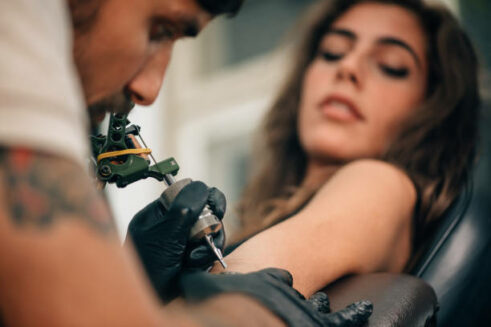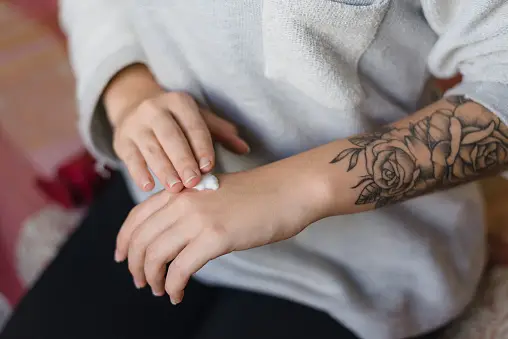In the intricate world of tattooing, where art meets resilience, the journey often involves navigating through the unexpected challenges of broken skin. Whether you’re a seasoned ink enthusiast or a first-timer braving the needle’s sting, the prospect of soothing a tattoo on damaged skin can be daunting. Enter the realm of tattoo numbing creams tailored for broken skin – a haven for those seeking a painless and comfortable tattooing experience.
In this comprehensive guide, we delve into the nuances of the best numbing creams, explore the efficacy of tattoo numbing sprays, unravel the mysteries of applying numbing cream to a healing tattoo or open wound, and decipher the techniques to numb broken skin.
What is the Best Numbing Cream for Broken Skin?
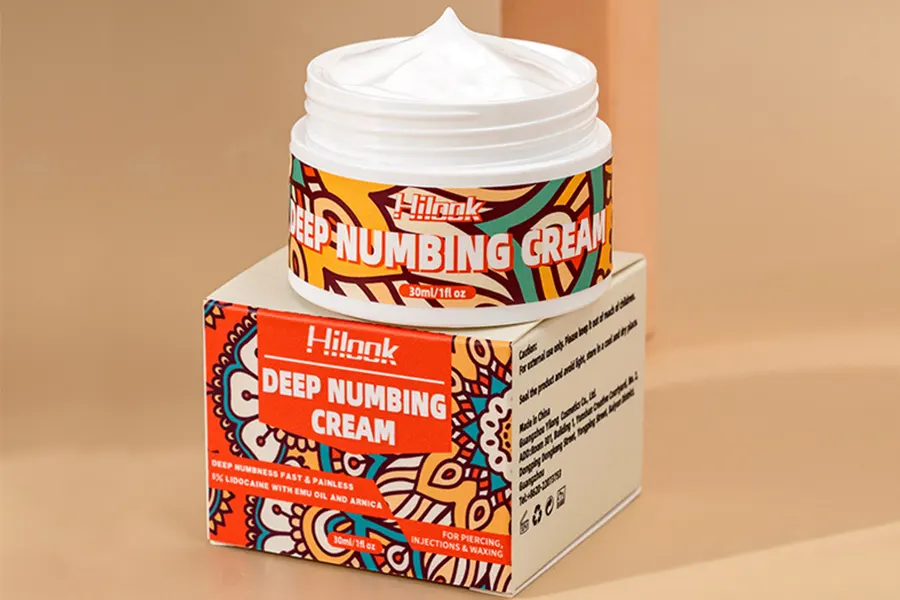
The quest for the best numbing cream for broken skin is a critical one, demanding a meticulous examination of formulations and efficacy. In this realm, one name stands out as the epitome of pain management – the gold standard for tattoo enthusiasts seeking a seamless blend of relief and healing.
The Best Tattoo Numbing Cream: Hilook
Hilook emerges as a frontrunner in the world of tattoo numbing creams for broken skin. With its potent blend of lidocaine and additional skin-soothing ingredients, this cream takes pain alleviation to a new zenith. The 5% lidocaine concentration ensures a profound numbing effect, offering respite to those navigating the delicate terrain of broken skin.
Crafted with precision, Hilook not only mitigates pain but also accelerates the healing process. Its unique formulation, enriched with botanical extracts and vitamins, promotes skin regeneration, making it the ideal companion for those grappling with the challenges of broken skin. Applying Hilook becomes a ritual of restoration, turning the tattooing process into a therapeutic experience.
What is the Best Tattoo Numbing Spray for Broken Skin?

For those who prefer the convenience of a spray, the realm of tattoo numbing sprays unveils a myriad of options. Yet, amidst the choices, one spray stands out as a beacon of relief for broken skin.
The Best Tattoo Numbing Spray: Hilook
Hilook emerges as a game-changer in the landscape of tattoo numbing sprays, especially tailored for broken skin. Infused with a harmonious blend of lidocaine and cooling agents, this spray offers a refreshing respite for the compromised canvas. Its fine mist application ensures even coverage, providing a soothing cloud that gently envelops the broken skin.
Beyond its numbing prowess, Hilook tattoo numbing products holds a dual role as a healing elixir. Packed with antioxidants and anti-inflammatory agents, it fosters an environment conducive to accelerated skin recovery. The gentle mist becomes a therapeutic touch, transforming the tattooing experience into a tranquil journey through pain and healing.
Can You Put Numbing Cream on a Healing Tattoo or on Open Wound?
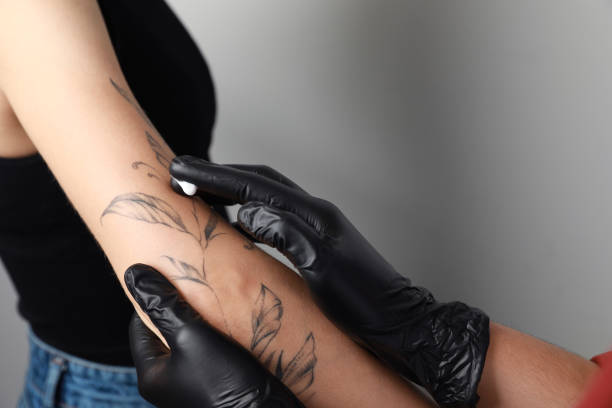
Yes, numbing cream can be applied to a healing tattoo or an open wound, but it’s important to use it carefully and follow the instructions provided by the cream manufacturer or your healthcare provider. Numbing creams can help alleviate pain and discomfort, especially during the initial healing stages of a tattoo or for minor wounds. However, it’s essential to ensure that the area is clean and properly cared for before applying any numbing cream to avoid infection or other complications.
Navigating Healing Tattoos
Applying numbing cream to a healing tattoo requires a nuanced approach. As the skin undergoes the intricate phases of recovery, it becomes more susceptible to external influences. While numbing creams can still be utilized during this phase, it’s crucial to follow specific guidelines:
- Choose a Gentle Formula: Opt for a numbing cream with a gentle formulation, avoiding excessive additives that may irritate the healing skin.
- Consult with Tattoo Artist: Seek guidance from your tattoo artist before applying numbing cream to a healing tattoo. They can provide insights based on the specific characteristics of your ink and skin.
- Wait for Initial Healing: Avoid applying numbing cream during the initial stages of healing when the skin is most sensitive. Wait until the scabbing and peeling phases have concluded.
Addressing Open Wounds
The prospect of numbing an open wound introduces additional considerations. While numbing creams can offer relief, stringent precautions must be observed:
- Consult with a Healthcare Professional: Prioritize consultation with a healthcare professional before applying numbing cream to an open wound. Their expertise ensures that the chosen cream aligns with the wound’s specific needs.
- Ensure Sterility: Thoroughly clean and sterilize the open wound before applying numbing cream. Maintaining a sterile environment minimizes the risk of infection.
- Follow Healing Guidelines: Adhere strictly to the recommended healing guidelines for open wounds. Applying numbing cream should complement, not compromise, the natural healing process.
How Do You Numb Broken Skin?
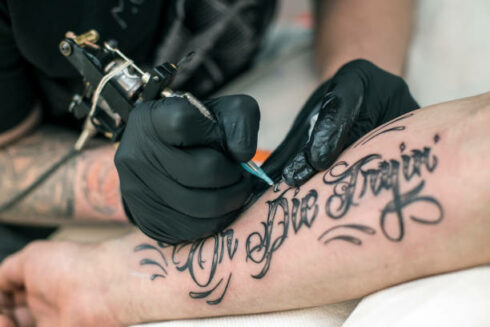
Numbing broken skin demands a strategic approach, considering the compromised nature of the canvas. The technique involves a meticulous process to ensure both effective pain relief and a conducive environment for healing.
- Cleanse the Area Thoroughly: Begin by gently cleaning the broken skin with a mild, fragrance-free cleanser. Remove any debris or bacteria that could impede the numbing cream’s absorption.
- Select the Right Numbing Agent: Choose a numbing cream or spray specifically formulated for broken skin. Look for products with lidocaine as a primary ingredient, ensuring a robust numbing effect.
- Perform a Patch Test: Prior to widespread application, conduct a patch test on a small section of broken skin to check for any adverse reactions or sensitivities.
- Apply a Thin, Even Layer: Using a clean and sterile applicator, apply a thin and even layer of numbing cream or mist to the broken skin. Ensure uniform coverage without excessive application.
- Cover the Area: To enhance absorption and prevent interference, cover the treated area with a sterile, non-stick dressing or plastic wrap. This protective layer serves as a shield against external contaminants.
- Allow Adequate Absorption Time: Respect the recommended absorption time specified by the chosen numbing product. Typically, this ranges from 20 to 30 minutes. During this period, refrain from disturbing the covered area.
- Remove Excess Cream: Once the absorption time elapses, gently remove any excess numbing cream or mist with a clean, damp cloth. This step ensures that the skin is primed for the tattooing process.
- Proceed with Tattooing: With the broken skin adequately numbed, the tattooing process can commence. The reduced sensation facilitates a more comfortable experience, allowing the tattoo artist to navigate the broken terrain with precision.
By adhering to this systematic approach, numbing broken skin transforms from a challenge into a calculated ritual. The delicate dance between relief and healing unfolds, turning the tattooing experience into a harmonious synergy of pain management and artistic expression.
Conclusion
In the realm of tattoo numbing creams for broken skin, the convergence of science and art finds its zenith. As you embark on this transformative journey, let the soothing touch of these specialized creams guide you through the intricate landscape of pain and healing. Whether it’s the profound efficacy of Hilook or the Hilook of Hilook, these numbing agents redefine the tattooing experience, offering a bridge between pain and artistic catharsis. The canvas of broken skin becomes not just a space for ink but a testament to resilience and the indomitable spirit of self-expression.


